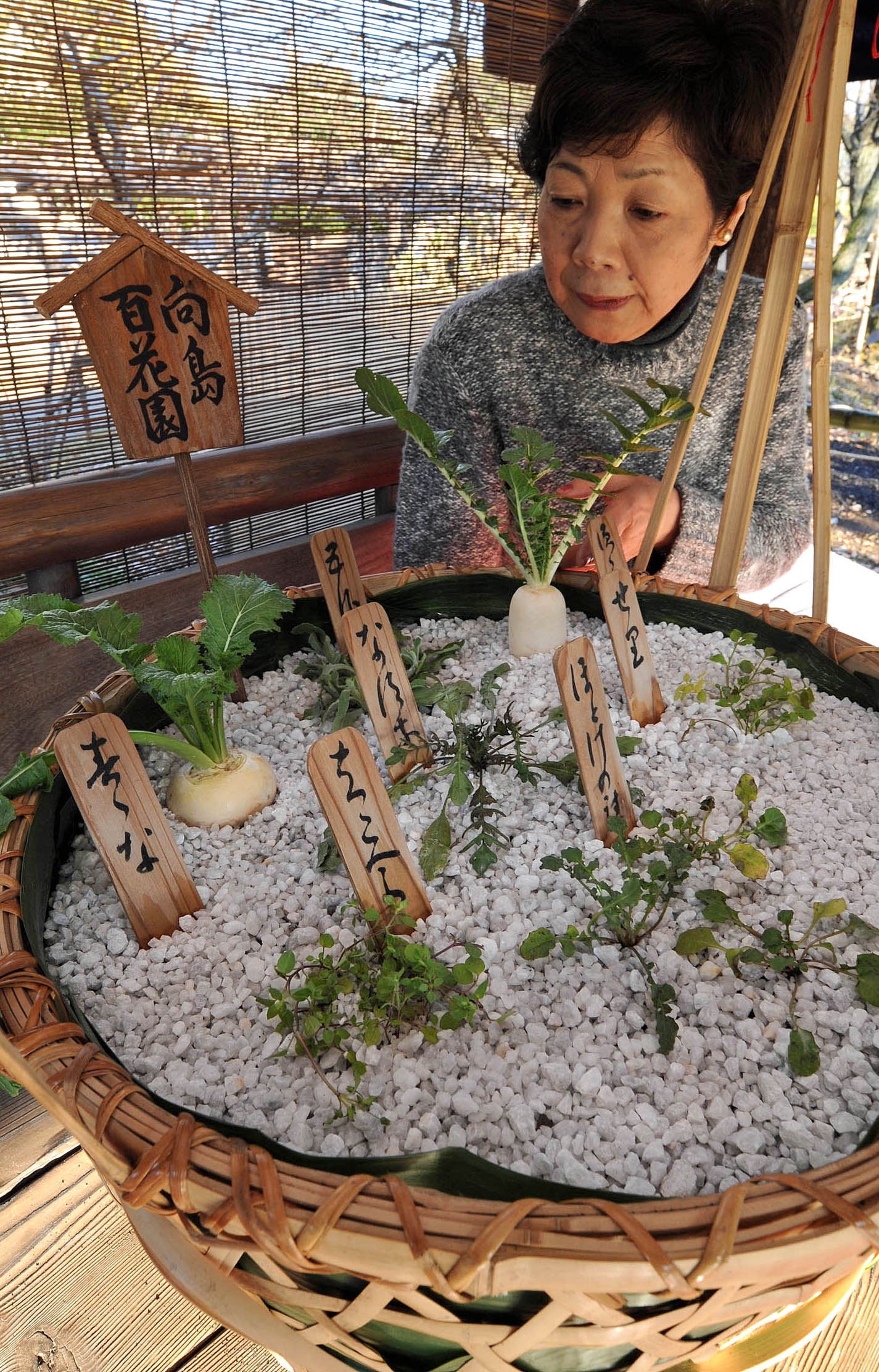
A woman visiting the Mukojima-Hyakkaen Gardens in Sumida, Tokyo, on Wednesday, December 25, looks at the seven herbs planted together in a large bamboo basket.
Masaki Shimizu
Seven edible herbs traditionally used in rice porridge served on January 7 are put on display through that day at Mukojima-Hyakkaen Gardens in Sumida, Tokyo, beginning Wednesday, December 25.
The seven greens grown in the gardens – seri (Japanese parsley), nazuna (shepherd’s purse), gogyo (Jersey cudweed), hakobera (chickweed), hotokenoza (Japanese nipplewort), suzuna (turnip leaves) and suzushiro (Japanese white radish leaves) – are planted together in bamboo baskets, including the one with a diameter as large as 50 centimeters, attracting visitors’ attention as harbingers of spring.
Nanakusa-gayu, or seven greens rice porridge, is customarily eaten for breakfast on the seventh day of a new year as a way of wishing a year of sound health. The herbs are supposed to be medicinal, as the custom is meant to let the overworked stomach and digestive systems rest after the sumptuous New Year feasting.
The gardens were established in the Edo period as a place to enjoy flowers such as ume (Japanese apricot) blossoms, and it is said that Kikuu Sahara, the first owner of the gardens, began the custom of sending baskets of seven herbs to customers as year-end gifts.
The baskets are created at the gardens in the end of every year and are presented to the Imperial royal family, as well as being displayed and put on sale for visitors.
Tomoko Mori, 36-year-old staff of the gardens, said she hopes people will enjoy looking at the baskets and eating the carefully-grown greens.
(Dec. 26, 2013)

